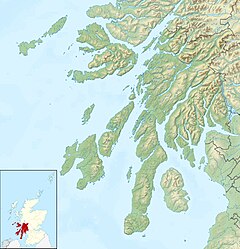
Cromer Lifeboat Station is an RNLI station located in the town of Cromer in the English county of Norfolk. The station operates two lifeboats – one for inshore work and the other for offshore work.
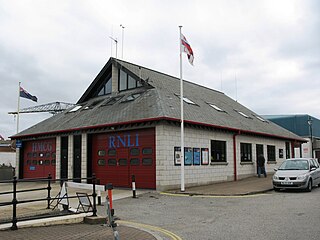
Falmouth Lifeboat Station is the base for Royal National Lifeboat Institution (RNLI) search and rescue operations at Falmouth, Cornwall in the United Kingdom. The first lifeboat was stationed in the town in 1867 and the present station was opened in 1993. It operates a Severn Class all-weather Lifeboat (ALB) and an Atlantic 85 inshore lifeboat (ILB).

Fowey Lifeboat Station is the base for Royal National Lifeboat Institution (RNLI) search and rescue operations at Fowey on the south coast of Cornwall in the United Kingdom. The first lifeboat was stationed in the area in 1859 and the present station was opened in 1997. It operates a Trent Class all weather boat (AWB) and a D class (IB1) inshore lifeboat (ILB).

Appledore Lifeboat Station is the base for Royal National Lifeboat Institution (RNLI) search and rescue operations at Appledore, Devon, England. The first lifeboat was stationed in the town in 1825 and the present station was opened in 2001. It operates a Tamar-class all-weather boat (ALB) and an Atlantic 85 B Class inshore lifeboat (ILB).

St Ives Lifeboat Station is the base for Royal National Lifeboat Institution (RNLI) search and rescue operations at St Ives, Cornwall in the United Kingdom. The first lifeboat was built for the town in 1840 and the present boathouse was opened in 1994. It operates a Shannon-class All-weather boat (AWB) and a D-class (IB1) inshore lifeboat (ILB).

Weymouth Lifeboat Station is the base for Royal National Lifeboat Institution (RNLI) search and rescue operations at Weymouth in Dorset, England. The first lifeboat was stationed in the town in 1869. Since 2002 it has operated a Severn-class all-weather lifeboat (ALB) and an Atlantic 75 inshore lifeboat (ILB).

Salcombe Lifeboat Station is the base for Royal National Lifeboat Institution (RNLI) search and rescue operations at Salcombe, Devon in England. The first lifeboat was stationed in the town in 1869. The Salcombe Lifeboat has twice capsized, in 1916 with the loss of 13 lives, and in 1983 with no loss of life. Since 2008 the station has operated a Tamar-class all weather boat (ALB) and an Atlantic 75 inshore lifeboat (ILB).

Teignmouth Lifeboat Station is the base for Royal National Lifeboat Institution (RNLI) search and rescue operations at Teignmouth, Devon in England. The first lifeboat was stationed in the town in 1851 but the station was closed from 1940 until 1990. Since 2006 it has operated an Atlantic 85 inshore lifeboat (ILB).

Poole Lifeboat Station is the base for Royal National Lifeboat Institution (RNLI) search and rescue operations at Poole, Dorset in England. The first lifeboat was stationed at Poole Harbour in 1865 and the present station was opened in 1988.

Sennen Cove Lifeboat Station is the base for Royal National Lifeboat Institution (RNLI) search and rescue operations for the sea around Land's End, Cornwall in the United Kingdom. The first lifeboat was stationed at Sennen Cove in 1853. Since 2009 it has operated a Tamar-class all weather boat (ALB) and a D-class (IB1) inshore lifeboat (ILB).

Exmouth Lifeboat Station is the base for Royal National Lifeboat Institution (RNLI) search and rescue operations at Exmouth, Devon, England. The first lifeboat was stationed in the town in 1803 and the present station was opened in 2009. In 2014 a new Shannon-class 25-knot all-weather boat (ALB) went on station. Also operated is a D-class (IB1) inshore lifeboat (ILB).

Torbay Lifeboat Station is the base for Royal National Lifeboat Institution (RNLI) search and rescue operations at Brixham, Devon in England. Brixham Lifeboat Station was opened in 1866 but since 1924 has been known as 'Torbay'. Since 2005 it has operated a Severn-class all-weather lifeboat (ALB) together with a D-class (IB1) inshore lifeboat (ILB).
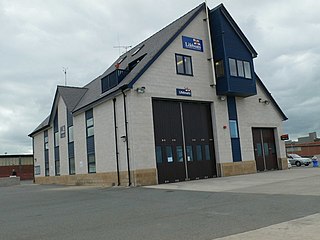
Rhyl Lifeboat Station is operated by the Royal National Lifeboat Institution (RNLI) in the North Wales town of Rhyl. For over 150 years, the Lifeboat Crew in Rhyl have been saving lives at sea. The first lifeboat was stationed in the town in 1852 and the present station was opened in December 2001. The station operates a Shannon-class All-weather lifeboat (ALB), and an D-class (IB1) Inshore lifeboat (ILB).
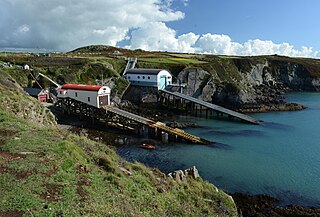
St Davids Lifeboat Station is a Royal National Lifeboat Institution (RNLI) station. It was opened in 1869 and to date has been involved in saving over 360 lives at sea in more than 420 launches. The station operates both an all-weather (ALB) and an inshore (ILB) lifeboat.

Clovelly Lifeboat Station, serving the North Devon village of Clovelly and surrounding coastal waters, is run by the Royal National Lifeboat Institution (RNLI). It was established in 1870. The station is flanked by Appledore to the northeast and Bude to the southwest.

Plymouth Lifeboat Station is the base for Royal National Lifeboat Institution (RNLI) search and rescue operations at Plymouth in England. The first lifeboat was stationed in the city in the early 1800s. The station moved to its present site at Millbay Docks in 1992, a Grade II-listed three-storey tower. Since 2003 it has operated a Severn-class all-weather boat (ALB) along with an B-class Atlantic inshore lifeboat (ILB).

Barmouth Lifeboat Station is located in Barmouth, a town at the mouth of the Afon Mawddach river in Gwynedd, Wales. A lifeboat was first stationed here by the Royal National Institute for the Preservation of Life from Shipwreck (RNIPLS) in 1828.

Swanage Lifeboat Station is a Royal National Lifeboat Institution (RNLI) station located on Peveril Point in the town of Swanage in Dorset, England. It operates two lifeboats, the Shannon-class All-weather lifeboat 13-13 George Thomas Lacy and the D-class (IB1) inshore lifeboat (ILB) Roy Norgrove (D-884).

Abersoch Lifeboat Station is the base for Royal National Lifeboat Institution (RNLI) search and rescue operations at Abersoch in Gwynedd, Wales. A station was opened in 1869 but was moved to become Penrhyndhu Lifeboat Station from 1894 until 1931. An inshore lifeboat station was opened in Abersoch in 1965 and moved into its present building in 1994. It operates an Atlantic 85 lifeboat.
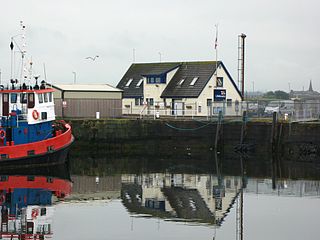
Troon Lifeboat Station is the base for Royal National Lifeboat Institution (RNLI) lifeboats at Troon in South Ayrshire, Scotland. It opened in 1871 and operates both all-weather and inshore lifeboats.


